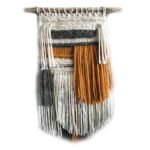
Yes, it’s December. So why, you might reasonably ask, is this guy writing a gardening story? Well, a very wise person once wrote, “God gave us memory so that we might have roses in December.” And if we can have roses in December, why not Japanese beetles too?
Japanese beetles! Yikes! I had never crossed paths with these destructive little horrors until this past summer, but once I’d made their acquaintance, they immediately ousted earwigs as numero uno on my personal list of most reviled public enemies of the sixlegged kind.
It began one hot July afternoon while I was chatting with a neighbour in my front yard. His eyebrows arched as he casually reached out and picked a small, copper-coloured bug from a tattered leaf of my terminally ill Camperdown elm.
“You have Japanese beetles,” he said. And there they were – a dozen or so, happily munching away, and several more amorous couples who appeared to be dancing the horizontal tango. No big deal; that tree was about to be euthanized anyway.
It was a different story a few days later when I discovered large sections of my climbing hydrangea almost completely defoliated. I was horrified. Game on! This was my Pearl Harbor. If those ravenous interlopers wanted war, I’d oblige them. Sorry, PETA, I didn’t start this fight. Sure, I respect the right of all living things to have access to a healthy, nutritious diet, but hydrangeas have feelings too.
But to wage war you need weapons, and when you live in a province with some of the country’s stiffest restrictions on the use of garden chemicals, you have two strikes against you. Oh, please! Spare me the sanctimonious tut-tutting. I wouldn’t use that stuff anyway. When we lived in the country, I was ahead of the curve, removing most chemicals from my arsenal before it became law. I’m just saying that we are seriously disadvantaged when it comes to defending our gardens against an invading horde of hungry pests. Time to think outside the box.
Japanese beetle traps were one consideration, but traps, I was warned, would attract more beetles than they’d catch. Maybe I’d be doing my neighbours a favour, but that wasn’t my intention.
As temperatures dipped and the 2020 crop of beetles was clearly on the wane, my thoughts turned to next summer when hostilities would be almost certain to resume.
Desperate for a long-term solution, I was all ears when someone suggested beneficial nematodes. I didn’t know a nematode from a garden toad but was willing to learn.
Seems that the female beetle lays her eggs in the soil under your lawn. The grubs that emerge then feed on the roots of your grass. Hello, dead lawn patches. After overwintering in their subterranean digs, the grubs emerge as adult beetles the following year. And the beat goes on.
Enter the nematode. For those of you who are as clueless as I was, here’s a primer. Nematodes are microscopic worms which, when applied to your lawn, work their way into the soil on a search-and-destroy mission, targeting the grubs and nipping next year’s crop of beetles in the bud. As a bonus, they save your lawn from further destruction. At least, that’s the theory.
With nothing to lose except a few dollars, I purchased a little package of 20 million of those itsy-bitsy parasites. No, I didn’t count them. I’m a trusting soul. They really are microscopic.
Despite some nasty online reviews, I also opted for a specialized hose-end sprayer that guaranteed the correct water/nematode mixture and foolproof results.
Big mistake.
About ten minutes into the operation, things began to go south with the appearance of a rapidly growing leak at the hose-end connection. Then catastrophe, as the damned thing literally exploded.
Okay, maybe “literally” is an exaggeration and, yes, I guess “exploded” is too. But we live in an age when shameless hyperbole has become the norm. Anyway, my new sprayer really did fall apart, rather spectacularly drenching me with nematode-laden water.
My supply of expletives exhausted, I dumped the dregs of my nematode concentrate into a couple of watering cans, added water, and finished the job the only way I could. Who knows how many of those tiny predators actually made it into the soil?
Of greater concern is how many made it into my innards. Look, my face took the brunt of that nematode tsunami and there are several orifices on and around my comely countenance which provide easy ingress into some rather vital organs. I could be a walking horror movie as scores of those starving invertebrates eat away at my body from the inside out.
My only hope is that, like the giant panda and the Monarch butterfly caterpillar, nematodes are univorous with eyes only for those yummy white grubs underneath my snow-covered lawn. Hopefully, they’ll find my internal workings repulsive. Only time will tell. So, if I’m here to regale you with another George’s Pond in the spring, you’ll know I dodged that bullet. As for the 2021 crop of Japanese beetles, I’ll keep you posted… provided I’m still around.
Story by:
George Smith
Illustration by:
Charles Bongers




